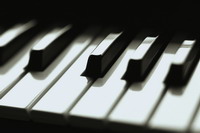Piano Sheets > Joe Cocker Sheet Music > You Are So Beautiful (ver. 4) Piano Sheet
You Are So Beautiful (ver. 4) by Joe Cocker - Piano Sheets and Free Sheet Music

About the Song
Other avaliable versions of this music sheet: Version 1 Version 2 Version 3 Version 4 Version 5
"You Are So Beautiful" is a song written by Billy Preston and Bruce Fisher. It was first recorded by Preston and made popular in a version by Joe Cocker.
Preston's original version first appeared on his 1974 album The Kids and Me. Cocker's producer, Jim Price created a slowed-down arrangement for Cocker's version, which first appeared on the album I Can Stand a Little Rain (released later in 1974). Released as a single, this Joe Cocker version reached #5 on the 1975 Billboard pop single charts and helped the album become a hit.
Although never officially credited, several sources have documented that Dennis Wilson of The Beach Boys was a co-writer of the song. According to Wilson's biographer, Jon Stebbins, Wilson claimed that he and Preston spontaneously collaborated on the words to the song at a party. Wilson sang the song as an encore at Beach Boys shows intermittently between 1975 and.
Download this sheet!
About the Artist

Random article
Piano notes and music reading No language is easy to learn except for our mother tongue. Mother tongue is a language which we start learning as soon as we are conceived. But learning some other language can be difficult if you are really not into it. Piano Notes are written in a completely different language. Agreed that the characters in the piano notes are very artistic and beautiful but they are equally strange to beginners and newcomers. But here is one interesting fact. Learning music reading from a piano notes music sheet is not a very difficult task. Actually it is much easier than learning a foreign Asian language like Chinese. Memorization and repetition are the two main ingredients for success in mastering the language of piano notes. So realistically speaking, once you are done reading the basics, all you have to do is practice the language as much as you can. To say in a very classical tone, practice till each and every note starts running through your veins. (More...)
